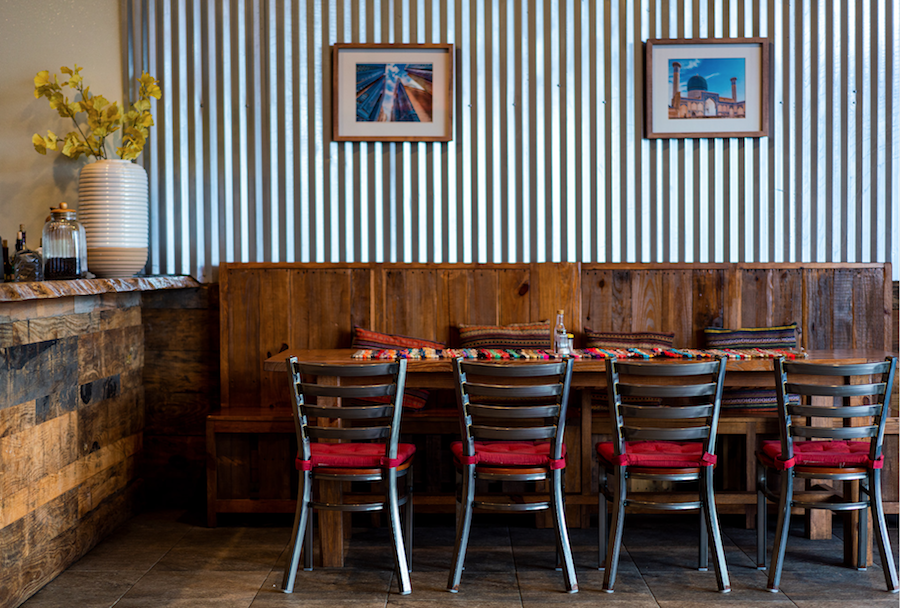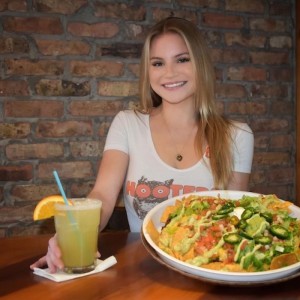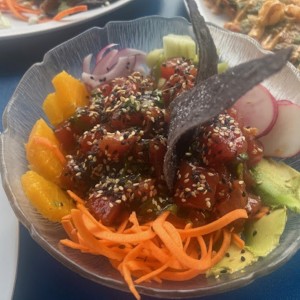A stiff breeze blows snow across the dirt road from Tashkent to Samarkand. The silk traders pull up their hoods and brace against the cold, leaning hard on their staffs as they approach an ornate teahouse with tall columns on its front porch that terminate in carved wooden arches. They seek shelter, rest and sustenance. A warm glow from inside promises all. They enter, and as the door closes behind them, the roar of the wind is replaced by the sounds of a Russian-language ballad being sung by a drunk, pot-bellied man out of a karaoke machine. It’s 2021, dude, and you can’t trade silk for soup anymore.
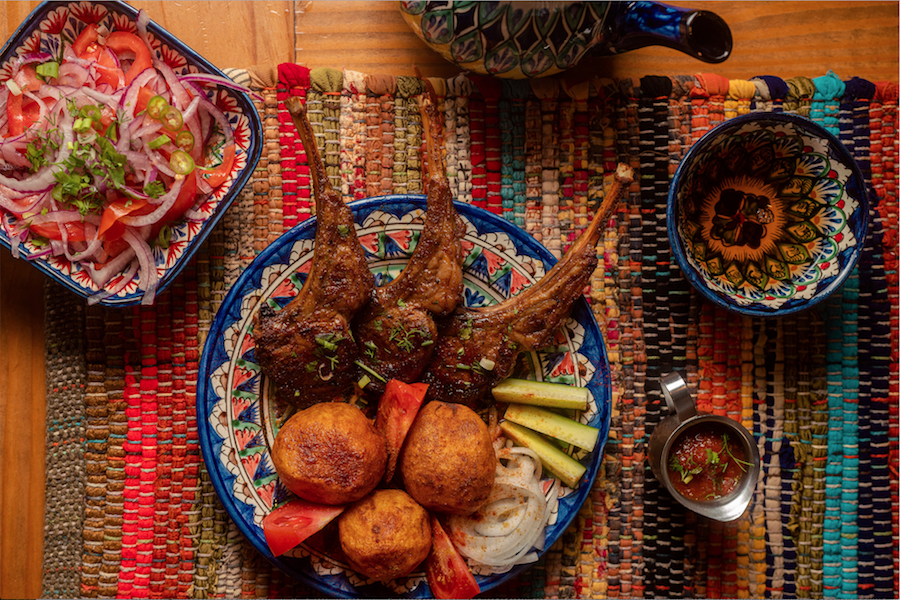
MARINATED AND SEARED TO PERFECTION, THE LAMB CHOPS PACK A LOT OF FLAVOR. PHOTO BY WYATT KOSTYGAN
But at Chayhana Vostok, which means “Eastern teahouse” in Russian, the spirit of Old World trade routes exists just beneath the surface of its modern comforts and, yes, alongside the occasional karaoke night. Located on Tamiami Trail just South of Walt’s Fish Market, the Uzbek restaurant has all the hearty, meat-heavy dishes of the landlocked nation that have become one of the most well-received cuisines of the former Soviet Union. A long history of raising and herding livestock, along with the heavy grain production of the region, infuses the menu’s soups, various grilled meats and wheat-based specialties. Of the wheat-based specialties, few foods define a cuisine quite like bread. Lepeshka is a variety of flatbread baked similarly to Indian naan but with a look and shape more like a bagel. Owner-operator Rustam Lyukhay makes the dough for his restaurant’s lepeshka completely from scratch and bakes it to order. The top of the bread is stamped in its center with a pattern, then glazed and sprinkled with sesame seeds, resulting in a warm, fluffy bread fit for weary travelers.
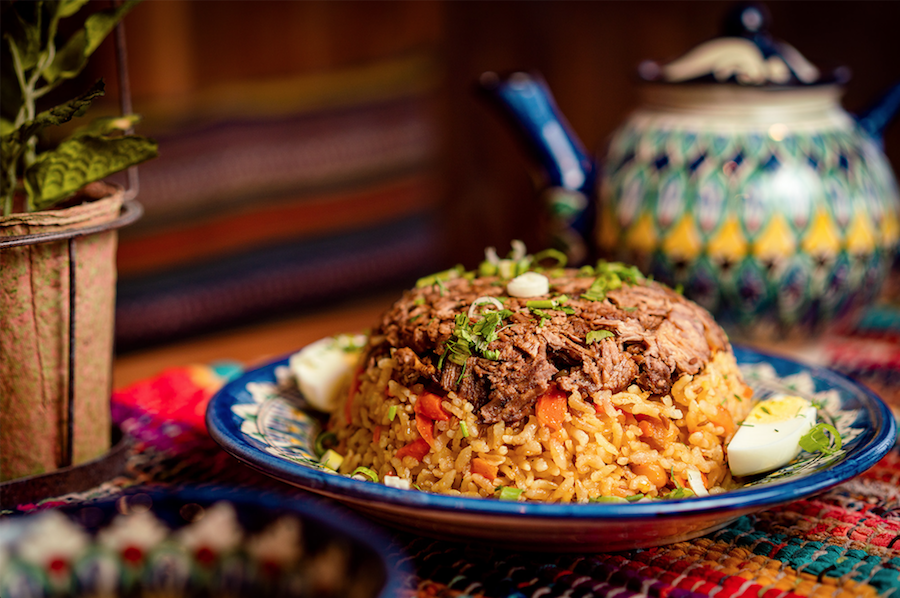
DELIGHTING THE SENSES WITH CUMIN AND COLOR, CHAYHANA VOSTOK'S PILAF IS FILLING AND SAVORY. PHOTO BY WYATT KOSTYGAN
Both samsas and manty, two more grain-based foods, also make their way onto the menu. The former consists of baked phyllo dough pastries stuffed with beef, onion and spices, much like a meat-stuffed Cuban pastelito but savory and earthy with cumin and coriander. The experience of warm, savory stuffing inside a flaky, crispy exterior is a joy difficult to define. Unlike the samsas, which are offered as an appetizer, the manty serves as a main dish. The four big, steamed dumplings come stuffed with chopped lamb meat and onions, with sour cream served in a ramekin in the middle for dipping. Like the manty, the restaurant’s soups offer enough nourishment to weather the hard road west to Byzantium. The lagman soup celebrates the country’s noodle-rich diet with homemade noodles while lamb and vegetables add something interesting and familiar, respectively. A shurpa soup, however, takes the rich, earthy flavor of lamb and concentrates it into a broth so rich that diners might wonder if Lyukhay keeps livestock out back for the freshest flavor. The rendered fat from the lamb chops thicken the broth superbly, while crudely cut carrot and potato pieces bring starch and a touch of sweetness. Finally, chopped dill and cilantro top off the silky, chunky dish from which the fall-off-the-bone chops protrude.
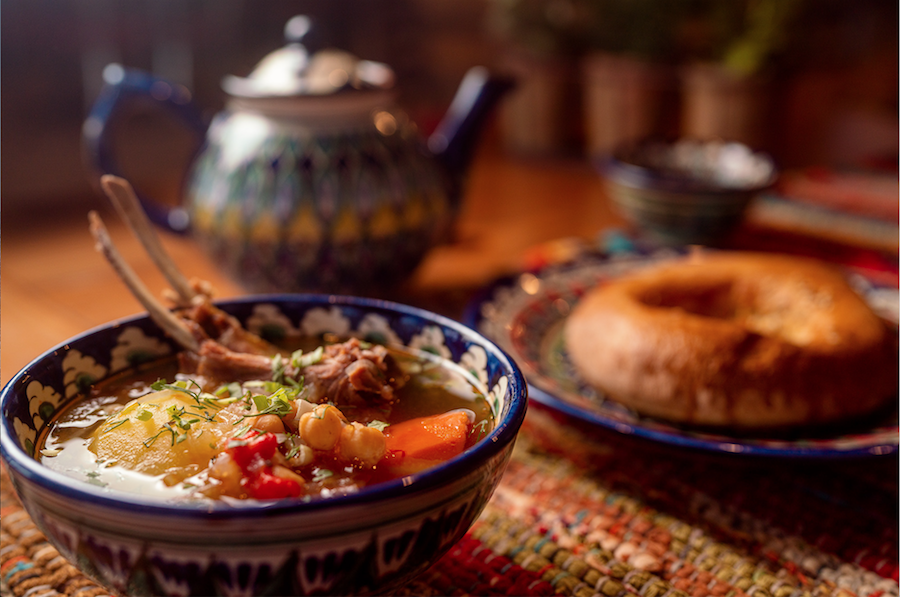
WHEN ACCOMPANIED BY FRESH-BAKED LEPESHKA (FLATBREAD), THE SHURPA SOUP IS AS HEARTY AS AN ENTREE. PHOTO BY WYATT KOSTYGAN
And fear not, famished traveler, for we come now to the meat. As the shurpa and lagman soups suggested, Uzbekistan loves its lamb (or its mutton, to be exact). A traditional Uzbek pilaf, which is usually reserved for special occasions, comes formed into a perfect mound, with tender pieces of pulled lamb atop rice that’s been mixed with shredded carrots, onions and an ample dose of cumin. Nearly as aromatic as burning incense, the meal begins at first smell in a very real sense, as though the preparation is designed to waft into a busy thoroughfare in search of empty stomachs. An assortment of shashlik (kebabs) provide a simple dose of protein for meat lovers while a chicken tabaka includes a whole butterflied chicken lovingly seared in butter and garnished with dill and cilantro. But the lamb chop dish is otherworldly. The marinade includes something tangy the soft spoken Lyukhay does not divulge, but only citrus or rice vinegar seem like reasonable guesses to a meat bursting so effulgently with flavor that no taste bud is left deactivated. It has pep and perk while still maintaining the faint gaminess of the lamb. While it certainly helps that the final plating is also sprinkled with a bit of paprika, cumin and coriander, those spices hardly explain the juicy interior of the meat.
At this point, the beauty of Uzbek dinnerware must be noted. Few cultures still produce more colorful and detailed bowls, plates and platters for everyday use. A pot of tea—a beverage as important to Uzbek culture as water is to its agriculture—comes served in a gorgeous kettle that looks as though it came straight from the shop of some artisan in Tashkent. Served in an equally ornate piala (handleless teacup), any Uzbek meal begins and ends with tea, a mild black and green tea blend, served unsweetened in the case of Chayhana Vostok.
As for karaoke nights, you’ll have to follow the restaurant’s social media pages and know how to read Cyrillic characters.
Chayhana Vostok, 4242 S Tamiami Trl., Sarasota, 941-923-5919.




